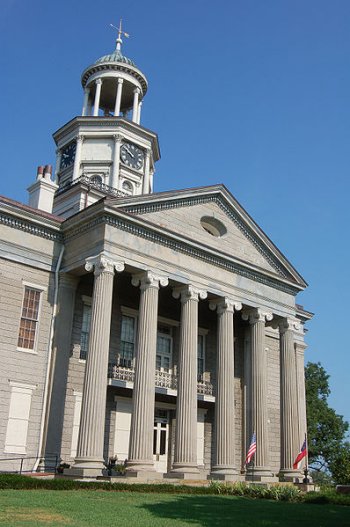Vicksburg is a city in central western Mississippi. It covers 35.3 sq mi (98.32 sq km) and has a population of 26,000 people (2011 estimate). It is located on the Mississippi and Yazoo rivers, about 234 miles (377 km) to the northwest of New Orleans.
 Old Vicksburg Courthouse
Old Vicksburg CourthouseSource: https://commons.wikimedia.org/wiki/File:Vicksburg_courthouse_vert1.jpg
Author: Galen Parks Smith

The inhabitants of Vicksburg during the arrival of the first Europeans were Natchez tribe of Native Americans. The French were the first Europeans to settle in the area. They built Fort-Saint-Pierre overlooking the Yazoo River. Ten years later, the Natchez staged an attack on the fort, killing several hundred of the settlers. The French retaliated, with help from rival tribes, the Chocktaw, and the Natchez were scattered, enslaved and deported.
With the Natchez swept aside, the Choctaw Nation took over the Vicksburg area, occupying it until 1801, when they were forced to cede nearly 2 million acres to the United States. This was the first of a systematic progression to remove the Choctaw from the area, pushing them west of the Mississippi.
The city of Vickburg was incorporated in 1825, named after a Methodist minister Newitt Vick. During the American Civil War, Vickburg was the site where Confederate General John C Pemberton surrendered, marking a turning point for the war.
Visiting Vicksburg
Vicksburg is on Interstate 20 which connects it with Jackson to the east and Shreveport to the west.Places of Interest in Vicksburg
- Biedenharn Museum of Coca-Cola® Memorabilia
Museum housed in the bottling factory where Coca-Cola was botted for the first time in 1894. - Old Vicksburg Courthouse Museum
The most historical building in Vicksburg, built by slaves in 1858. - Vicksburg National Military Park
Park commemorating the Siege of Vicksburg in 1863.
 Latest updates on Penang Travel Tips
Latest updates on Penang Travel Tips

Copyright © 2003-2025 Timothy Tye. All Rights Reserved.

 Go Back
Go Back